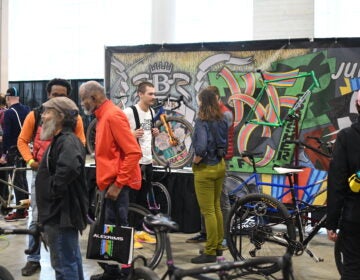What’s padel? A play to bring Spain’s beloved racquet sport to Philly
They love padel in Spain. Now the group behind a national campaign hopes Philadelphia — and the rest of America — will, too.
Listen 3:18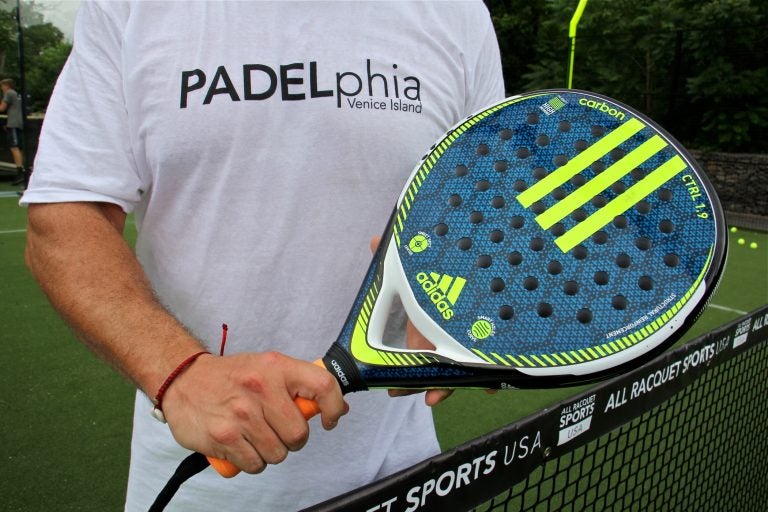
A padel racquet is a lightweight paddle strengthened with carbon and shot through with holes. Racquets like this one cost from $80 to $140. (Emma lee/WHYY)
This summer Philadelphia will get a taste of padel.
The racquet sport, something of a cross between tennis and squash, is popular in South American and Europe, particularly Spain, but little-known in the United States. Out of the estimated 30,000 padel courts in the world, only 65 exist in America, according to a count by Lee Sponaugle, president of All Racquet Courts.
“This is the first public facility, in a public park, in the United States,” he said, standing between two newly-built courts outside the Venice Island Recreation Center, in Philadelphia’s Manayunk neighborhood.
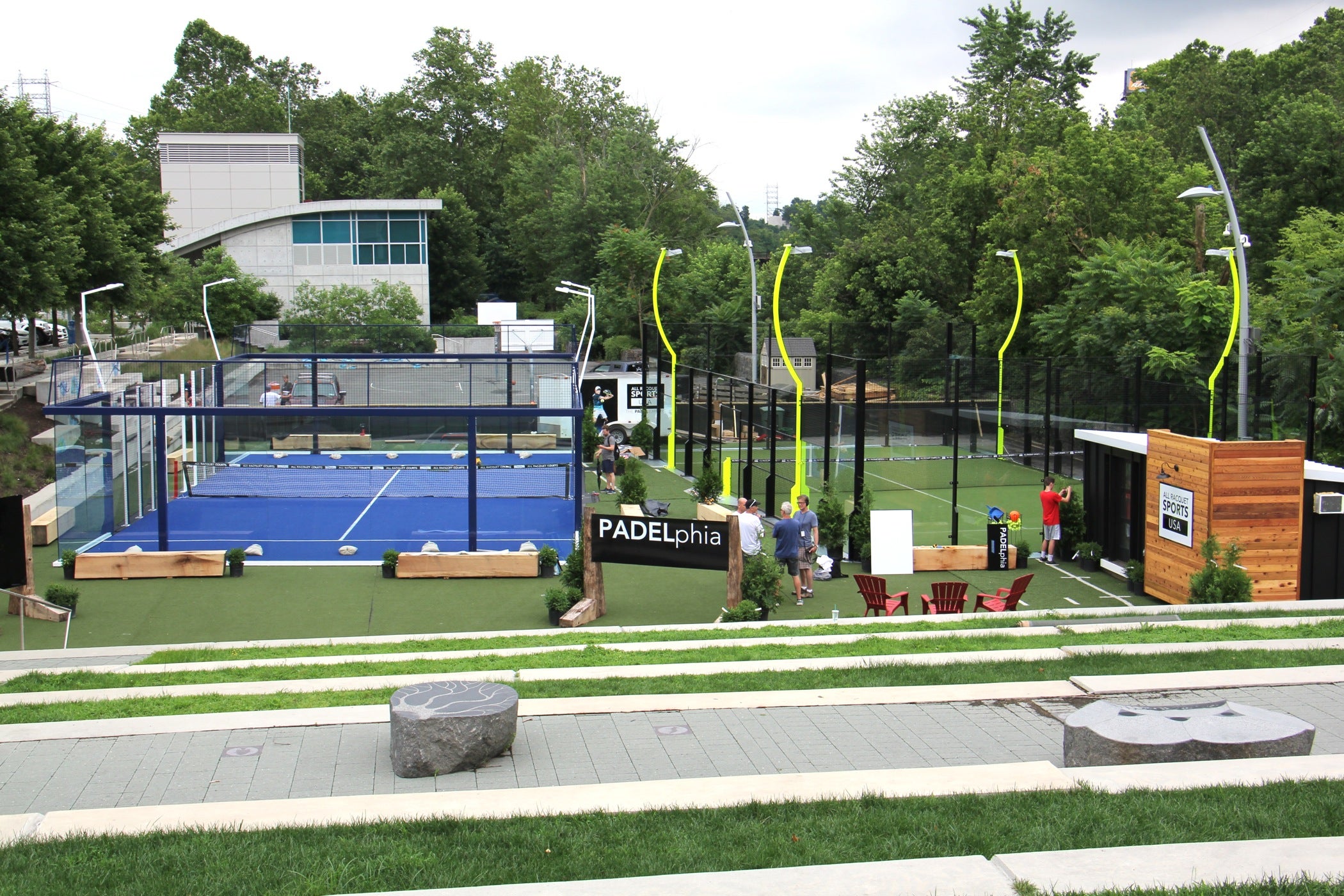
Sponaugle’s 18-month old business is based in Salt Lake City, Utah. He found a local partner in Scott Grote, of Lancaster, Pa., a builder who designed a temporary padel court for Venice Island. (This disclosure: Grote is married to WHYY’s Jennifer Lynn.)
“Most courts in the United States — of those 65 a vast majority are private residents, a wealthy person who experienced the court overseas and said, ‘I need that in my backyard,’” said Grote. “Most courts are private.”
How to play it
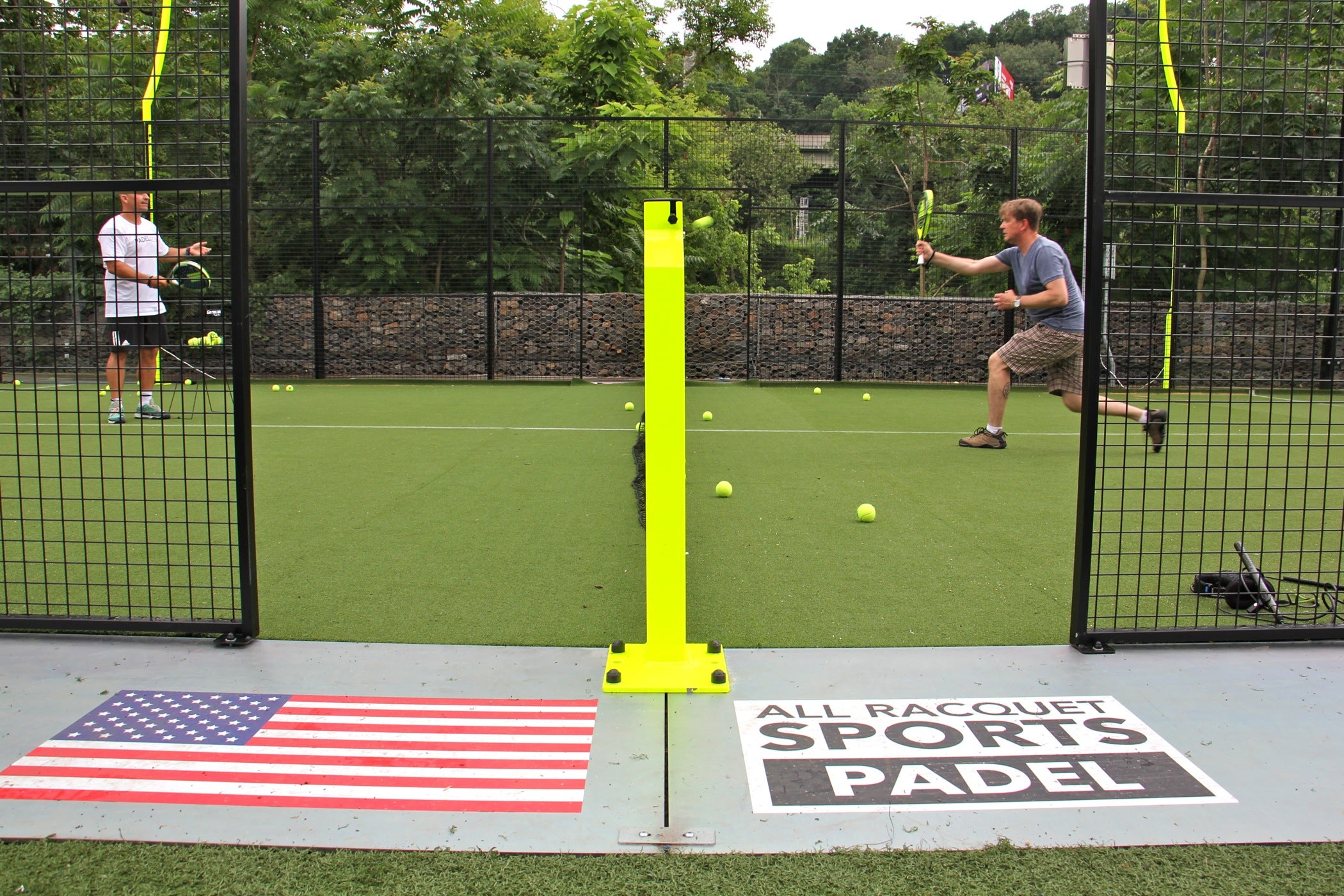
Padel is played on a court with players on opposite sides of a net, just like tennis. The court is surrounded by glass walls so the ball can never go out of bounds, like squash.
The main difference is that the game is not played with a stringed racquet, but rather a paddle resembling an oversized ping pong paddle, with a perforated face of molded EVA, a plastic polymer.
The balls are similar to tennis balls (many players use standard tennis balls without noticing a difference), but the court surface is AstroTurf, which dampens the bounce.
So the ball in padel moves more slowly than in tennis, which makes it easier for beginners to pick up the game. However, it can be livelier because you are able to play off the walls.
“You need to feel the ball. That’s why we don’t play with strings,” said Marcos del Pilar, a professional padel player and trainer from Spain hired by All Racquet Sports to introduce the American public to the sport.
“Instead of hitting the ball, you need to drive it,” he said. “You want to travel with it. You want to treat him well.”
How do you say it?
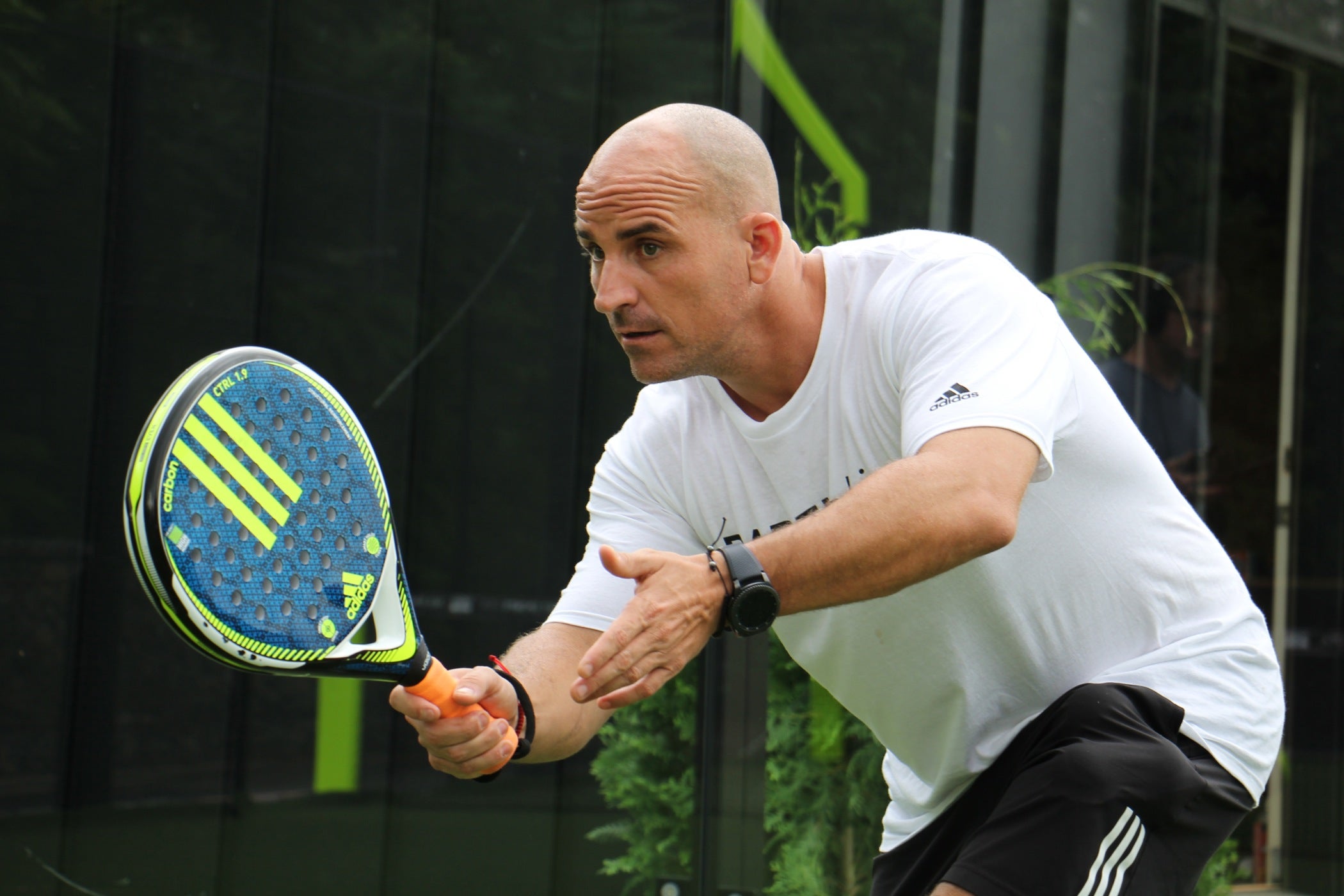
The first lesson in padel is pronouncing it.
“Around the world it’s pronounced ‘paddle.’ But here in the United States, we have other paddle sports and it’s confusing, so we decided to make it a little fancy and call it pah-DELL,” said Grote. “We invented that.”
“In Spanish, it sounds sexier,” added Sponagule, instructing Pilar to demonstrate. “Say the word.”
“Padel,” he said, softening the “L” with his native Madrid tongue.
“Kind of sexy,” said Sponaugle. “It’s European.”
Tennis, with its less-sexy name, is in a bit of a slump right now. While the popularity of spectator tennis remains huge, particularly around the U.S. Open, fewer people are actually playing it.
According to a 2018 report by the Tennis Industry Association, participation numbers have been flattened, and among younger people are ticking downward.
“We feel that padel can energize the racquet sports industry and bring people back, hanging out at the club, and socializing just like we did with tennis in the 1970s,” said Sponaugle.
Gaining traction won’t be easy
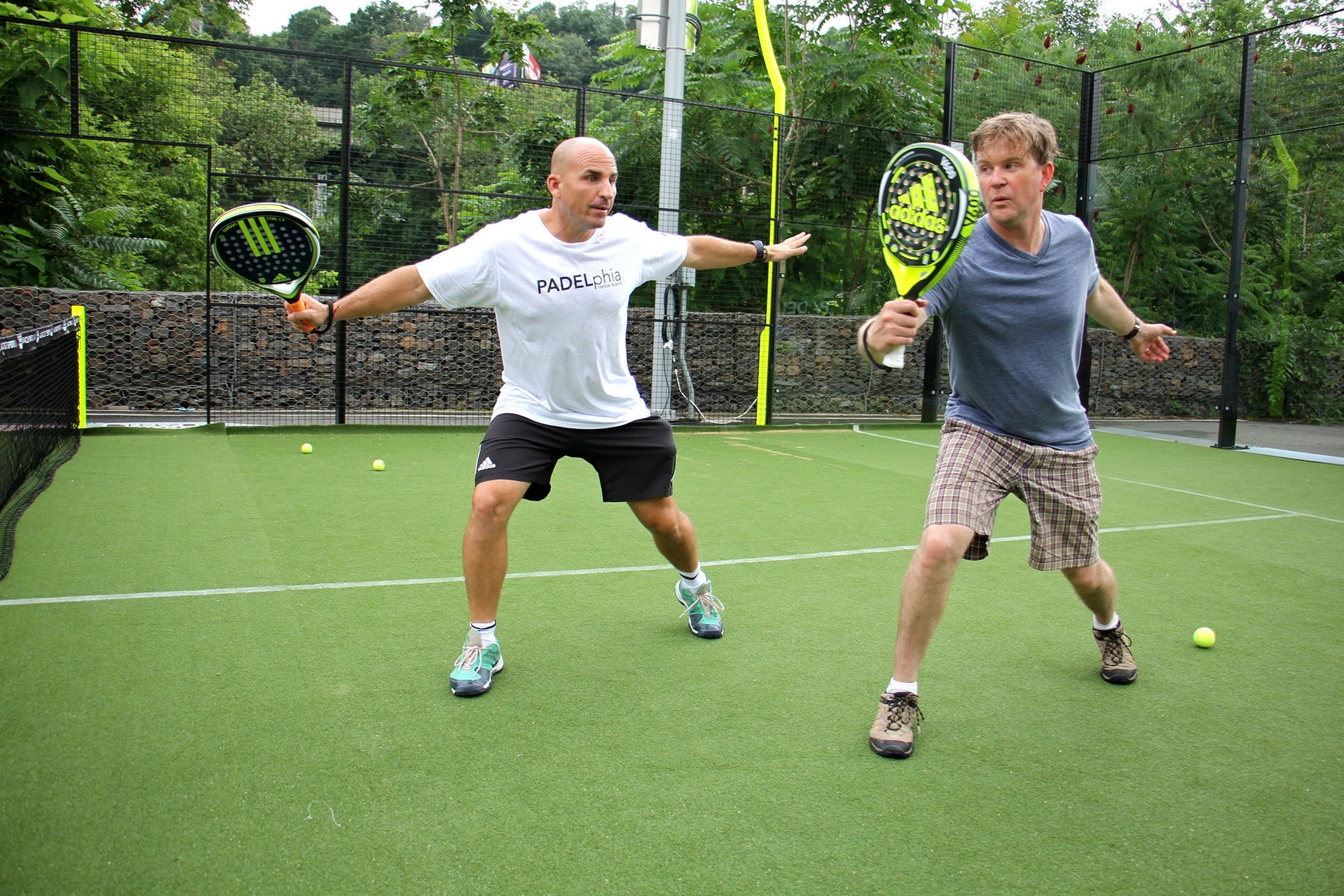
Introducing a largely unknown sport to Americans is a gamble. A century ago, a British woman named Constance Applebee, then the athletic director at Bryn Mawr College, introduced field hockey to women’s colleges up and down the east coast.
She founded the American Field Hockey Association in 1901 and America’s first women’s sports magazine, The Sportswoman, in 1924. To this day, the Philadelphia region regularly produces Olympic-quality field hockey players.
Around the same time, American girls were first learning field hockey, the court game Jai Alai was being introduced in the United States from Latin America. It gained traction largely in Florida and enjoyed popularity as a spectator gambling sport from the 1950s to the 80s; it’s even in the opening credits of “Miami Vice.”
Jai Alai’s association with gambling and organized crime weighed it down. Difficult and even dangerous to play, with ball speeds in excess of 150 mph, it didn’t make it as an amateur sport for casual pick-up games. Eventually its popularity waned — almost to the point of extinction.
Now, at the Venice Island courts, confidence in padel is running high. The consortium of designers and promoters were able to gain permission from both the city’s Department of Parks and Recreation and the Manayunk Development Corporation to use the public space to launch the sport.
“We see the explosion of the sport around the world. We see the excitement, the addiction, people want to come out,” said Sponaugle. “If people have a chance to play, they’ll play.”
During its four-month pop-up at Venice Island, the padel courts are expected to be visited by tennis club owners from Delaware to New York, scouting out the game.
It’s relatively easy to convert a tennis court into a padel court. The result can be profitable.
The average amateur tennis player replaces their racket every seven years. Sponaugle says average padel players replaces their paddles every year, costing between $80 and $350.
“If you bring one more person through your doors at a racquet club, that’s one more lesson, one more racquet, one more beer,” he said.
Until October, the Venice Island padel courts will host introductory workshops, pro demonstration games, and open play.
WHYY is your source for fact-based, in-depth journalism and information. As a nonprofit organization, we rely on financial support from readers like you. Please give today.



